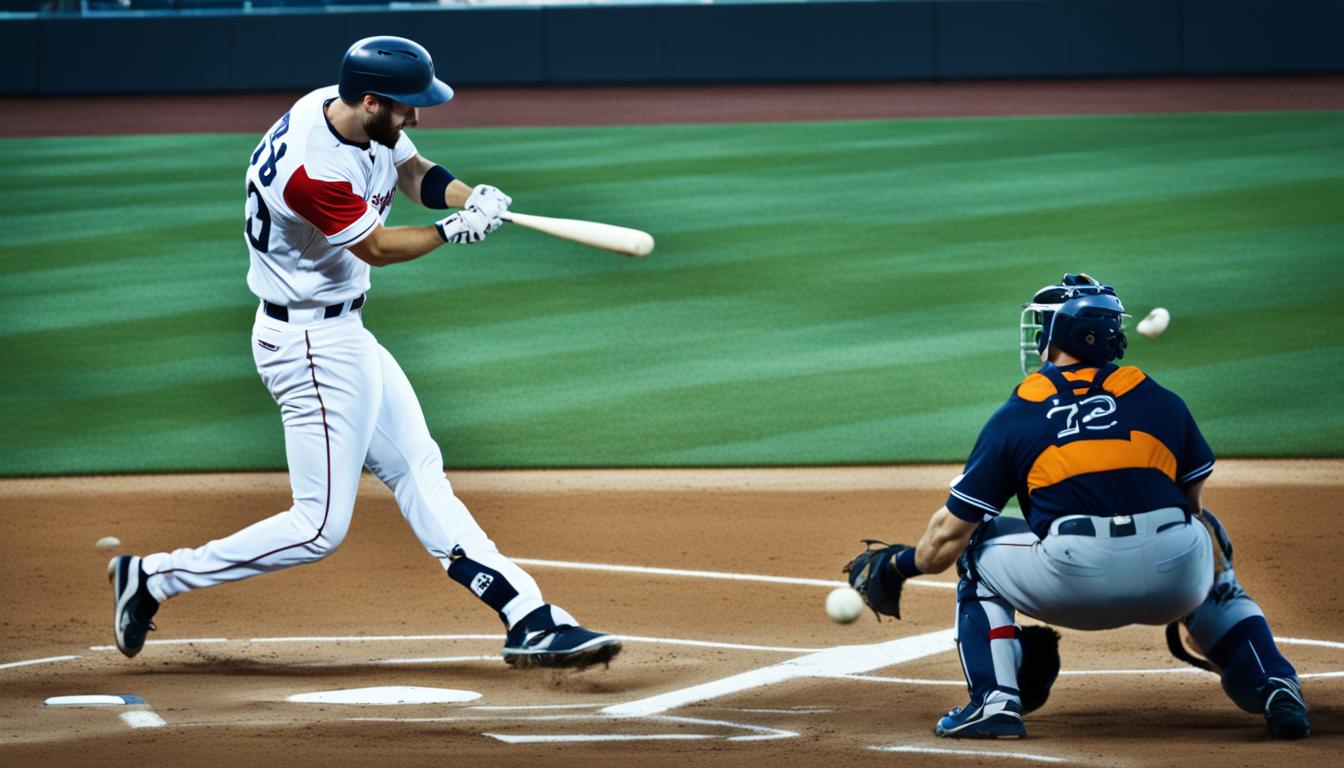
What is a rbi in baseball
If you’re diving into America’s beloved pastime, knowing the rbi baseball meaning is key. It’s as vital as loving the sound of the bat hitting the ball. Or feeling the suspense in a crucial moment. An RBI in baseball, short for “runs batted in,” shows how well a player gets teammates to score. It highlights the player’s impact, separating outstanding hitters from average ones.
An RBI happens when a player’s action leads to a run, unless an error is involved. It doesn’t always need a big homer. Sometimes, a simple single does the trick, or even getting hit by a pitch with bases loaded. The MLB history books show a record 12 RBIs in one game. This record is held by Jim Bottomley in 1924 and Mark Whiten in 1993, both legends.
The rbi meaning dives deep into baseball’s heart. Fans and statisticians often argue about the value of each RBI. High RBI counts earn players glory. But understanding RBIs is more than just numbers. It reveals the intricate dance of baseball, where personal talent stands out amidst teamwork and strategy.
Definitive Overview: RBI Meaning Unveiled
When we dive into ‘rbi in baseball,’ we find it’s more than just numbers. RBI, short for “run batted in,” blends individual success with the team’s efforts, showing how teamwork in baseball leads to runs. This measure has been used since the 1920 MLB season, adding a new layer to player and team analysis.

An RBI happens when a batter’s play causes runs to score, except when errors cancel those runs. This can happen in various ways, like a hit or a walk with bases loaded. It shows how players help their teams in more ways than just hitting. Fans and players call RBIs “ribby” or “ribeye,” making the term part of baseball’s unique language.
Discussing what rbi stands for brings up debates, like whether we say ‘RBIs’ or ‘RBI’ for multiple runs. The rules on RBIs have changed to make sure they accurately represent player contributions. This shows how baseball adapts over time.
Some critics, particularly sabermetrics experts, think RBIs reflect a team’s line-up chances as much as personal skill. This idea became popular after the game-winning RBI stat was used from 1980 to 1988. They argue RBIs highlight important plays but also depend on teammates’ skills to reach base.
So, understanding RBIs goes beyond their basic definition. It involves seeing their role in player evaluation, game plans, and fan discussions. This shows how one simple stat can shape how we view the game.
Unpacking the Impact of RBIs on Player Performance
Runs batted in (RBI) has been key in assessing a baseball player’s offense for years. It’s more than a stat; it shows how a player helps their team win. Players with high RBI counts are praised for their skill in getting runs.
Hank Aaron leads with 2,297 career RBIs. Albert Pujols and Babe Ruth are also famous, not just for homers, but for getting timely hits. Even a solo home run counts as an RBI, showing a player’s individual and team contribution.
RBIs and personal runs scored are different, reflecting game strategy. A player can score from a teammate’s hit or an error, not earning an RBI. Seasonal leaders, like Hack Wilson with 191 RBIs, show the value of driving in runs. RBIs help analyze a player’s impact and their place in baseball history.